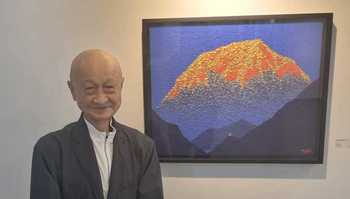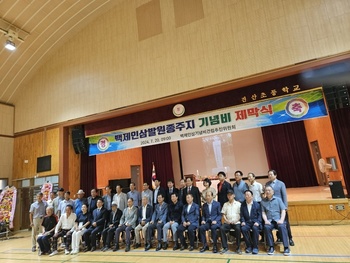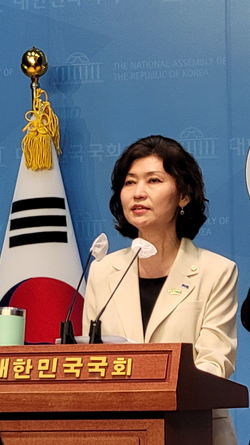 ▲ 정길선 박사 ©브레이크뉴스 |
대조국 전쟁이 끝나자 한반도 북부에 진주한 소련군은 그곳의 조선인들과 함께 새 국가 건설을 위한 준비에 착수했다. 그러나 이곳의 조선인들은 국가 건설은커녕 행정 경험도 거의 없었다. 그렇다고 일제 부역자들에게 의존할 수도 없는 노릇이었다. 소련 정부는 중앙아시아에 정착한 일부 고려인들에게 조선의 국가 건설에 참여하라는 명령을 내렸다. 이들은 구역 당ㆍ공산주의청년동맹ㆍ콜호즈(집단농장)ㆍ기업체ㆍ교육기관ㆍ군 등에서 일하며 풍부한 실무 경험을 쌓은 이들이었다.
1945년부터 49년까지 약 500명의 고려인들이 북한으로 파견되었다. 이들은 조선 출신으로 스탈린 체제 하에서 민족적 억압을 받고 있었지만, 그럼에도 불구하고 소련 공민이었다. 북한으로 향하는 열차에서 이들은 자신이 ‘파견’된다고 생각했을까, 아니면 ‘귀향’한다고 생각했을까? 북한에 파견된 고려인들은 정치, 경제, 교육, 군사 등 여러 분야에서 활발하게 활동했다. 소련에서 포시에트 구역 공산청년동맹(콤소몰) 비서로 일한 바 있는 허가이는 1946년 조직된 조선공산당 북조선조직위원회의 규약과 조직 체계를 마련하고, 당 중앙위원회 제1 비서와 부위원장에까지 오른 조선로동당의 산파였다.
사마르칸트에서 고중학교 교장을 지낸 기석복은 조선로동당 기관지 로동신문의 주필로 일하며 선전 분야에서 두각을 나타내었다. 마찬가지로 타슈겐트에서 고중학교 교장을 지낸 유성훈은 내각 간부학교 교장과 김일성종합대학 총장을 역임하였다. 옴스크의 고리키사범대학에서 문학을 전공한 조기천은 1947년 서사시 <백두산>을 발표하며 북한을 대표하는 문인이 되었다. 소련 중앙은행 산하 재정대학을 졸업하고 동 은행 포시에트 지부장을 지낸 김찬은 조선중앙은행 총재로 일하면서 1947년 화폐개혁을 주도했다.
로스토프의 운수대학에서 철도운수를 전공한 박의완은 1948년 초대 내각의 교통상이 되었다. 이르쿠츠크 의과대학을 졸업하고 군의관으로 근무한 리동화는 조선인민군 군의국장을 맡아 한국전쟁 시기 야전병원에서 동분서주하였다. 한국전쟁 때 북측 대표로 휴전회담에 참석한 남일 또한 잘 알려진 파북 고려인 중 한 사람이다.
콜호즈에서 다른 고려인 동포들과 함께 1946~1950년 시기에는 1헥타르당 4~5톤에 이르는 쌀을 생산해 내었고, 일부 작업반들은 심지어 8톤까지도 생산하면서 농업적 성과와 김병화의 지도력을 높이 평가한 소련 당국이 1948년에 처음으로 노동영웅 칭호가 수여되었다. 이후 1951년에는 콜호즈 건설과 목화 및 벼 수확고의 성과에 따른 결과로 다시 레닌훈장과 ‘낫과 망치’ 금메달을 받았다. 이곳 콜호즈는 강제이주라는 어려운 환경에 굴하지 않고 시대를 앞서갔던 고려인 동포사회의 희망이셨다.
소련 당시 고려인 중심으로 이루어진 우즈베키스탄 콜호즈(집단농장)은 20개에 달했는데 한결같이 우즈베키스탄인들에게 ‘백만장자’ 콜호즈로 불리우며 부러움 샀다고 한다. 1950년대 초만 해도 우즈베키스탄에는 도시지역에도 전기가 들어오는 지역이 거의 없었지만 고려인들이 운영하는 콜호즈들은 자체 발전소를 만들어 전기를 생산해내어 콜호즈 전체에 가로등까지 설치해서 우즈베키스탄 인들이 단체 견학을 올 정도로 발전되었다.
흐루시초프 소련 서기장이 김병화 선생에게 3번째로 노동영웅을 수여하라고 지시하였다. 하지만 선생은 우즈베키스탄에서 고려인이 3번에 거쳐서 노동영웅을 수여받기보다는 우즈베키스탄사람이 상을 수여 받는 것이 바람직하다고 밝히며 사양한 적이 있다. 이것은 선생의 겸손과 고려인 동포, 우즈베키스탄인 사이의 화합과 단합을 위하는 마음을 엿볼 수 있는 기회가 되었다.
1959년에 당시 베트남 호치민 주석이 소련 방문 시에 우즈베키스탄의 김병화 선생의 콜호즈를 방문하였다. 뿐만 아니라 흐루시초프, 브레즈네프 서기장 등 소련의 정치지도자와 사회주의권의 다른 지도자들도 자주 농장을 방문하여 선생과 고려인 농장원들의 놀라운 성과를 살펴보는 일정을 가지곤 했다.
*필자/ 정길선.
노바토포스 회원, 역사학자, 고고인류학자, 칼럼니스트, 러시아 과학아카데미 유라시아 고고인류학연구소 연구교수.
*아래는 위 기사를 '구글 번역'으로 번역한 영문 기사의 [전문]입니다. '구글번역'은 이해도 높이기를 위해 노력하고 있습니다. 영문 번역에 오류가 있을 수 있음을 전제로 합니다.<*The following is [the full text] of the English article translated by 'Google Translate'. 'Google Translate' is working hard to improve understanding. It is assumed that there may be errors in the English translation.>
Amazing achievements made by Koryo people who were forcibly relocated by Stalin
Gil-seon Jeong, columnist
After the Great Patriotic War ended, the Soviet army stationed in the northern part of the Korean Peninsula began preparations for building a new nation together with the Korean people there. However, the Koreans here had little experience in administration, let alone nation-building. However, it was not possible to rely on Japanese collaborators. The Soviet government ordered some Koreans who had settled in Central Asia to participate in the construction of the Joseon nation. These were people who had accumulated abundant practical experience by working in local parties, communist youth leagues, kolkhoz (collective farms), businesses, educational institutions, and the military.
From 1945 to 1949, about 500 Koryo people were dispatched to North Korea. Although they were from Joseon and suffered national oppression under the Stalinist regime, they were nevertheless Soviet citizens. On the train heading to North Korea, did they think they were being ‘dispatched’ or were they ‘going home’? Koryo people dispatched to North Korea were active in various fields, including politics, economics, education, and military. Hegai, who worked as secretary of the Communist Youth League (Komsomol) in the Posyet District in the Soviet Union, established the regulations and organizational system for the North Korean Organizing Committee of the Communist Party of Korea, which was organized in 1946, and was the midwife of the Workers' Party of Korea, who rose to the ranks of first secretary and vice-chairman of the Party Central Committee. It was.
Ki Seok-bok, who served as the principal of a high and middle school in Samarkand, distinguished himself in the field of propaganda while working as an editor for the Rodong Sinmun, the organ of the Korean Workers' Party. Likewise, Yoo Seong-hoon, who served as the principal of a high and middle school in Tashkent, also served as the principal of the Cabinet Executive School and the president of Kim Il-sung University. Jo Ki-cheon, who majored in literature at Gorky Pedagogical University in Omsk, became North Korea's representative writer with the publication of the epic poem <Baekdusan> in 1947. Kim Chan, who graduated from the School of Finance under the Central Bank of the Soviet Union and served as the head of the bank's Posyet branch, led the currency reform in 1947 while serving as governor of the Central Bank of Korea.
Park Ui-wan, who majored in railway transportation at the Transport University in Rostov, became the first minister of transport in the cabinet in 1948. Lee Dong-hwa, who graduated from the Irkutsk Medical University and worked as a military doctor, served as the director of the Military Medical Department of the Korean People's Army and worked hard in field hospitals during the Korean War. Nam Il, who attended the armistice talks as a representative of the North during the Korean War, is also one of the well-known Koreans from North Korea.
Together with other Korean compatriots in Kolkhoz, he produced 4 to 5 tons of rice per hectare between 1946 and 1950, and some work groups even produced 8 tons. The Soviet Union highly praised Kim Byeong-hwa's agricultural achievements and leadership. The title of Labor Hero was first awarded by the authorities in 1948. Later, in 1951, as a result of the construction of the kolkhoz and the results of the cotton and rice harvest, he again received the Order of Lenin and the ‘Sickle and Hammer’ gold medal. This kolkhoz was the hope of the Korean community that did not succumb to the difficult circumstances of forced migration and was ahead of its time.
At the time of the Soviet Union, there were 20 kolkhoz (collective farms) in Uzbekistan, mainly composed of Koreans, and it is said that they were all envied by Uzbekistanis by being called ‘millionaire’ kolkhoz. In the early 1950s, there were few areas in Uzbekistan that had electricity, even in urban areas, but kolkhozhs run by Koryo people built their own power plants to produce electricity and even installed street lights throughout the kolkhoz, which developed to the point where Uzbeks came on group tours.
Soviet General Secretary Khrushchev ordered Kim Byeong-hwa to be awarded the Hero of Labor Award for the third time. However, the teacher once declined, saying that it would be better for an Uzbek to receive the award rather than a Korean from Uzbekistan receiving the award three times. This was an opportunity to get a glimpse of the teacher's humility and his desire for harmony and unity between his Korean compatriots and Uzbeks.
In 1959, then-Vietnamese President Ho Chi Minh visited Uzbekistan's Kim Byeong-hwa's kolkhoz during his visit to the Soviet Union. In addition, political leaders of the Soviet Union and other leaders of the socialist world, such as Khrushchev and General Secretary Brezhnev, often visited the farm and observed the amazing achievements of the teacher and Korean farm workers.


















